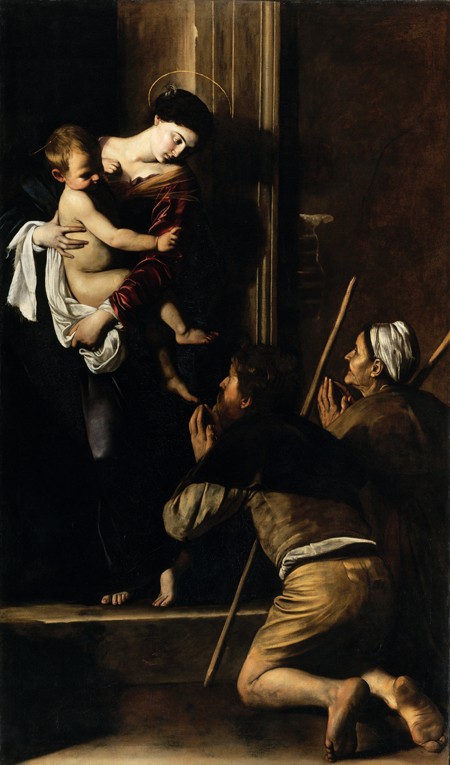During the first year of my appointment as Andrew W. Mellon Professor, my energies were devoted to the completion of a book and to launching two new research projects. Mochi’s Edge and Bernini’s Baroque, which will appear in 2017, takes the art of the Tuscan sculptor Francesco Mochi (1580–1654) as the entry point for an inquiry into the historical and cultural forces reshaping sculpture at the beginning of the seventeenth century. Mochi has long been understood as an early innovator of the baroque style whose career was eclipsed by the rise of his younger contemporary Gianlorenzo Bernini (1598–1680). But for his sole seventeenth-century biographer, what distinguished Mochi’s sculpture was his determination to adhere to “the Florentine manner.” The study argues that the post-Tridentine religious climate and the demands of consolidating absolutist regimes posed specific challenges for sculpture, particularly as the medium had been assertively developed during the first half of the sixteenth century by Florentine sculptors, most famously Michelangelo Buonarroti (1475–1564). Mochi’s highly distinctive sculptural style stemmed directly from his attempt to carry forward a Florentine and Michelangelesque tradition of sculpture—above all its commitments to the representation of the body, the materiality of sculpture, and the agency of the artist—and to reconcile that tradition with imperatives of his own day. Mochi’s ambitious undertaking produced an extreme tension in his art that resulted in some of the century’s most breathtaking sculptures, though these commitments also created challenges for the reception of his work throughout his career. The book offers wholly new interpretations of Mochi’s monumental works and a new, historically engaged account of the origins of baroque sculpture and the rise to dominance of Bernini’s mature sculptural style. The volume is enriched by specially commissioned color photographs of Mochi’s sculptures.
One of my new research projects takes up the question of how to interpret the religious art of Michelangelo Merisi da Caravaggio (1571–1610), a debate that for decades has balkanized the vast literature on the artist. Did Caravaggio’s new way of painting, usually but rather unhelpfully described as naturalism, and the visibility of studio models in his works—invariably drawn from the lower classes—give powerful visual expression to post-Tridentine forms of Catholic spirituality and renewed outreach to the poor? Or do these features of Caravaggio’s work, together with the artist’s well-documented police record, align better with art history’s competing vision of a protomodern artist, whose painterly commitments have been variously interpreted as religious skepticism or atheism, a subversion of institutional authority, and the visualization of libertine desires? Those scholars who have sought to find a middle ground have usually located it in an acceptance of the inherent ambiguity of Caravaggio’s religious art, which is often construed as an aspect of his modernity. Such solutions are attractive but thus far have not effectively situated the operations of Caravaggio’s paintings within their historical contexts. Toward that aim, in the spring I drafted an essay on Caravaggio’s Madonna of Loreto. Like many of the artist’s public religious images, this celebrated altarpiece in the Roman church of Sant’Agostino incited controversy in the seventeenth century because of Caravaggio’s practice of painting directly from the studio model. I argue that in the painting Caravaggio responded to this critical debate through a visual allusion to Sant’Agostino’s revered icon of the Madonna and Child, believed to have been painted from life by Saint Luke.
The second project begun this year will reconsider from an Italian perspective major artistic figures and genres associated with the Grand Tour, in contrast to prevailing accounts, which have emphasized the role of tourists’ tastes and demands in reshaping eighteenth-century Italian art. Through a series of case studies, I will probe the ways in which Italian artists used their visual productions to comment upon the cultural conditions of touristic consumption of the Italian peninsula as well as their development of artistic strategies for operating outside the tourist market. I envision essays on Pietro Longhi (1700/1702–1785) and the emergence of “insider” style and subject matter in Venice; on Pompeo Batoni (1708–1787) and the visual symptoms of cross-cultural unease in his so-called swagger portraits of tourists; and on miniaturization in the view paintings of Giovanni Paolo Panini (1691–1765) as a means of figuring the fragmentation enacted by the tourist’s gaze. The Grand Tour was the primary pilgrimage ritual through which a notion of pan-European identity was developed; but that notion was never wholly stabilized through transnational exchange. This material is thus topical as well as fertile ground for thinking through methodological issues that are central to art history today.
